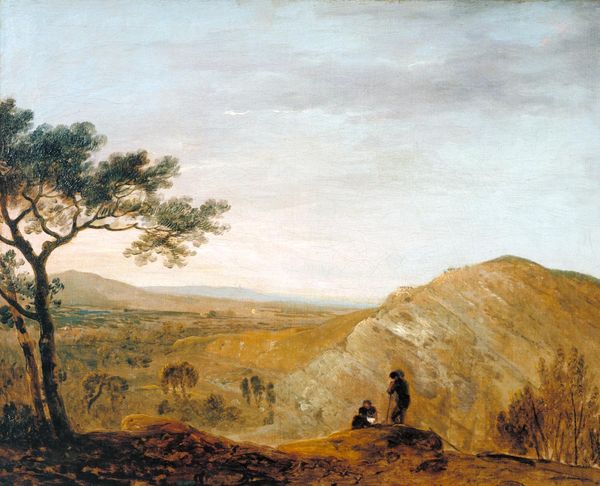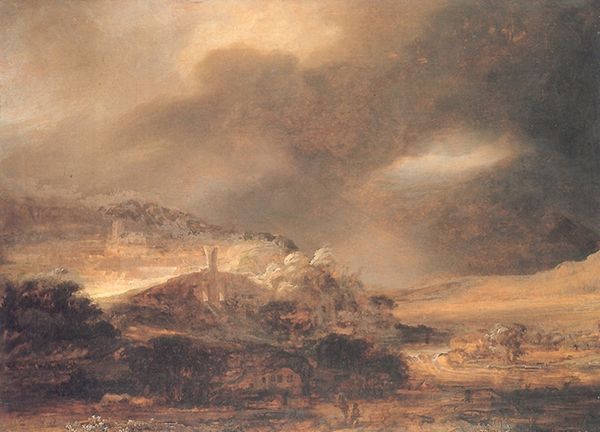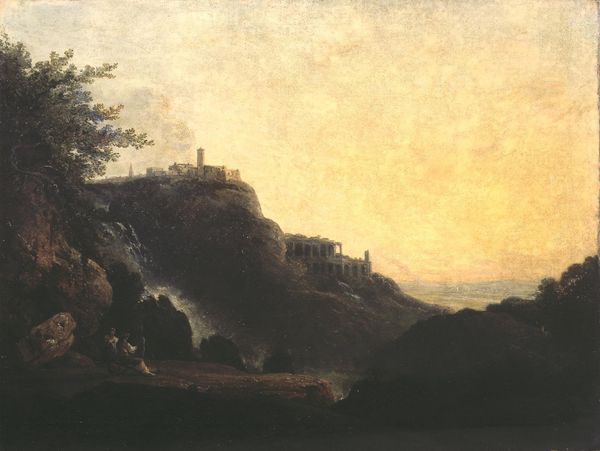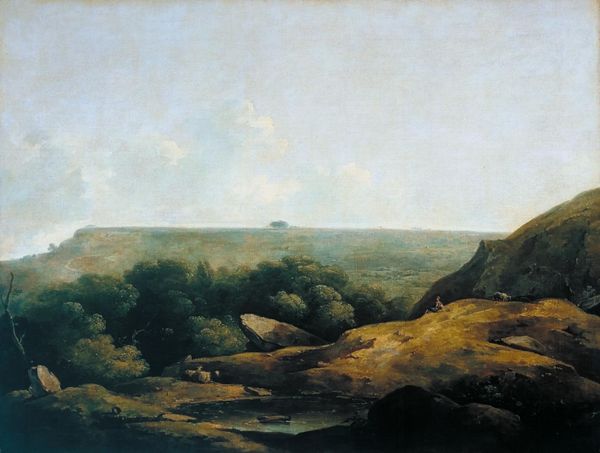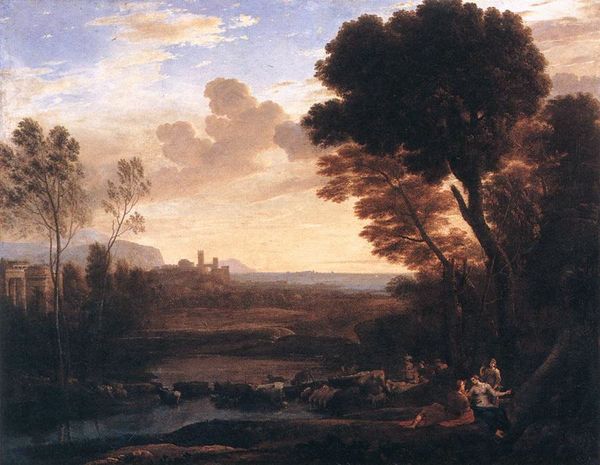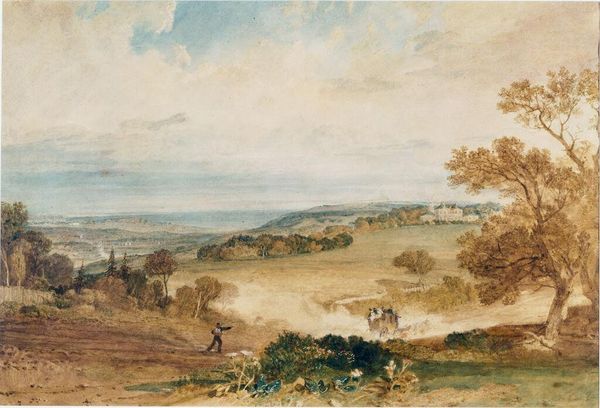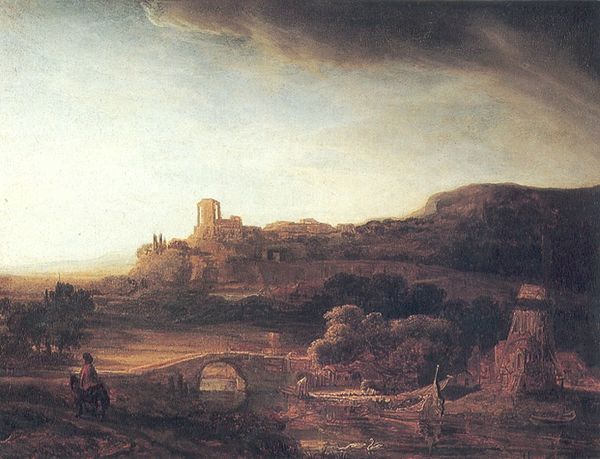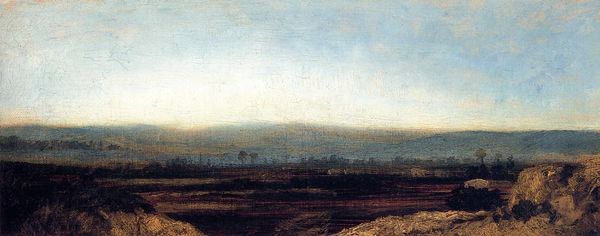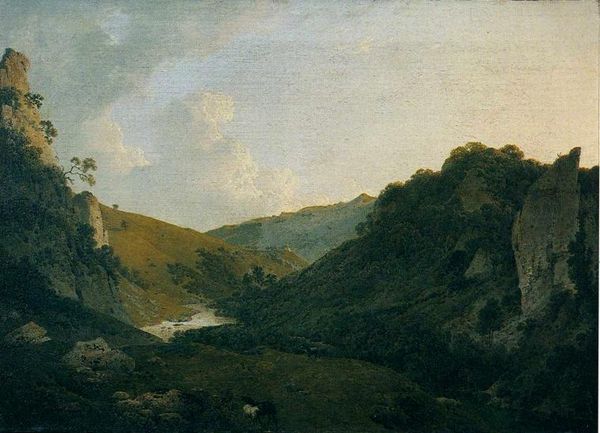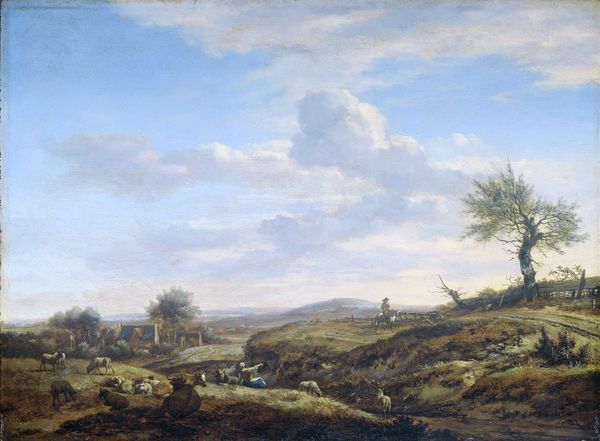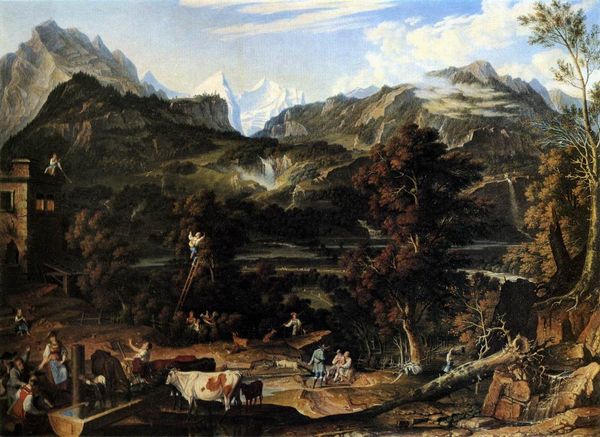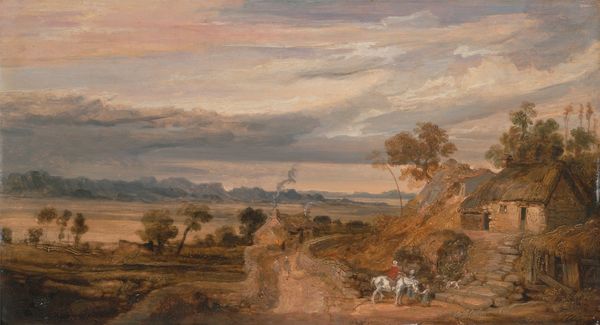
painting, oil-paint
#
baroque
#
painting
#
oil-paint
#
landscape
#
figuration
#
oil painting
#
genre-painting
#
realism
Dimensions: 269 x 128 cm
Copyright: Public domain
Editor: Here we have Jusepe de Ribera’s "Landscape with Shepherds," created around 1639 using oil paints. It's quite serene, with a hazy mountain backdrop, but there's also something very earthy about it, especially the details of the shepherding scene. What do you see in this piece? Curator: I see a carefully constructed image, seemingly simple, yet rich in information about its production. Ribera wasn't just depicting a landscape; he was participating in and responding to a burgeoning market for such genre scenes. What specific details catch your attention regarding the making of the image? Editor: Well, I'm intrigued by how Ribera used oil paints to create this atmosphere. It seems he used quite thin washes in some areas, which makes me think about the cost of materials. Was the availability of these pigments and oils also changing in that time? Curator: Precisely! The pigment choices, the oil quality, and the support upon which he paints speak volumes about economic and material access. Think about where Ribera was working—Naples—and the socio-economic structures that facilitated art production, who might have commissioned such work, and how their desires shaped the artistic outcome. It also makes us reconsider notions of pure "artistic expression." Editor: So, by looking at these elements—the cost, the materials, the support for this creation—we learn a lot about 17th-century life and also about how access to art supplies affects the art being produced, regardless of the artist’s intention? Curator: Exactly. We consider artistic creation through the lens of material conditions, understanding that the artistic "genius" is in dialogue with – and constrained by – a specific social and economic framework. This framework becomes just as important as any art historical idea of "beauty." Editor: That shifts the way I look at landscapes considerably. Instead of just appreciating its artistic value, I'm understanding it as a tangible product of its time. Curator: Absolutely! Recognizing the intricate connections between material, labor, and artistic outcome.
Comments
No comments
Be the first to comment and join the conversation on the ultimate creative platform.
